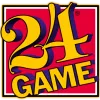
New! Digital Literacy & Well-Being Curriculum
The curriculum you trust – updated for today's digital dilemmas.
Take a look inside 7 images
First in Math
Pros: Games lack the "drill-and-kill" feeling; with so many games and levels, players can't get bored.
Cons: Some games require a bit more instruction, especially for younger kids.
Bottom Line: Nothing frilly: First in Math is 100% solid math practice through and through.
First in Math offers ideas to create a Wall of Fame using printable certificates as well as other classroom art to get students excited. Use this to create all sorts of incentive ideas like Weekly Winners and Team Goals. Not every student is ready for independent practice, which can cause anxiety around homework time. Skill-based homework can be replaced with time spent on First in Math. Kids think they're playing while building important number sense, and families will be happy for the change from the traditional homework routine.
The First in Math community is busy creating school-wide tournaments and challenges. Teams can get involved and watch as they rise in the rankings by school, district, and state levels.
First in Math is an online practice site that offers many ways to master facts, practice procedural skills, and engage in problem-solving. From the same folks who created the well-known 24 game, First in Math uses games to keep kids thinking and engaged. From the Player Hub, kids choose from the First in Math modules, with options for activities or operations. Modules include several games that have multiple levels. Each requires skills ranging from counting and patterns through algebraic thinking and equations.
Once teachers have registered their class as a team, the competition can begin. Rankings show students who've earned the most stickers through activity and progress, so students will be able to compete for the top slot regardless of ability level. Detailed reports give teachers access to both activity and mastery data. The First in Math Goals Index gives teachers insight into who needs some intervention or reteaching. Using this report, teachers can quickly form small groups based on skill level.
First in Math offers tons of opportunities for building fluency and facts practice as well as for problem-solving. The gaming approach gives kids a chance to practice their out-of-the-box thinking while feeling successful and having fun. Students earn stickers for activity time as well as for correct answers, and with so many options, no one will get bored.
Because student feedback during play is limited to right or wrong, it's important that teachers keep an eye on player reports for intervention. And since the reading level is high, younger kids will need some help from teachers to decipher the rules.
















